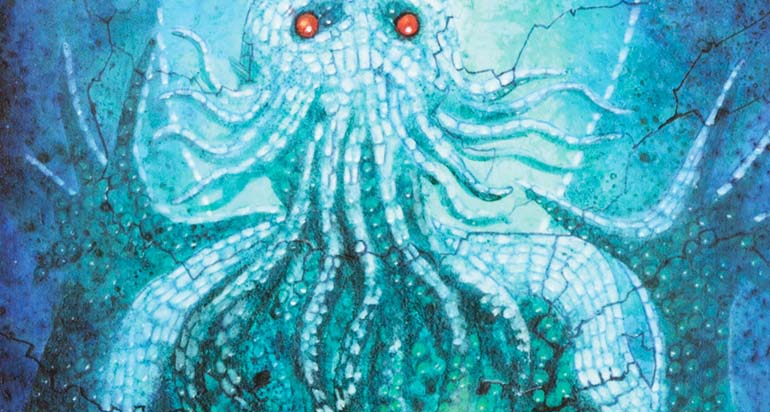I can’t think of any specific Lovecraft story that harkens back to Rome, but nonetheless, I feel like the Cthulhu Mythos is at home there. There is something about the tension between the “civilization” of the Romans and the “barbarity” lurking at its frontiers (not to mention, the empire’s internal decadence and decay) that seems ripe for supernatural horror (see the videogame Eternal Darkness, and also Ramsey Campbell’s Hungry Moon, which I happen to be reading at the moment). I am not alone in thinking this. Evidence: Cthulhu Invictus (2009).

The cover art, by Stephen Gilberts, which I adore, is an excellent indicator of what you’ll find inside. Here be monsters, of course, as well as a broad overview of the empire, its locales and ways of life, new magic, secret societies, setting specific professions, skills, etc.
I find the book extremely readable. It peppers its history with just enough Cthulhu Mythos plot seeds to make the ancient world seem vivid with magic, danger and corruption (the ancient world was full of cults, so adding a few more seems only natural). Many of the new monsters are taken from mythology and reimagined through a mythos lens – like the Blemmyes, headless men with eyes and mouths in their torso, who in Invictus serve the obscene god Y’Golonac. I love this sort of thing and Invictus does it well. And, honestly, I just love the visual of some of the classic Call of Cthulhu monsters, like the Dark Young of Shub-Niggurath, lurking among the splendors of the empire.
The main failing of Invictus is that it never goes deeper than an overview. There are plenty of intriguing ideas, but few are fleshed out enough for me to easily see a way to put together a campaign in the era. Which is perhaps fine – Chaosium has done some excellent work using Invictus for one-shots, particularly as historical flashbacks in Horror on the Orient Express.










